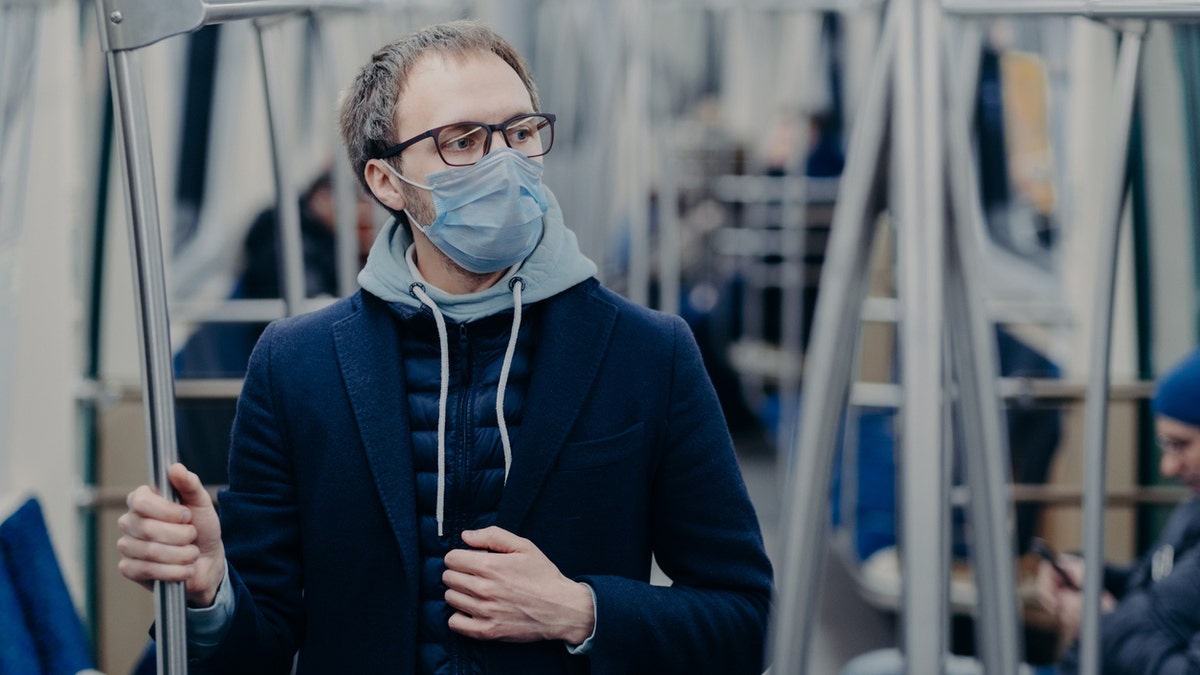Fox News Flash top headlines for September 17
Fox News Flash top headlines are here. Check out what's clicking on Foxnews.com.
A new study by Chinese researchers suggests that people who wear eyeglasses for extended daily periods may be less susceptible to COVID-19.
While the main route of infection for coronavirus is believed to be through respiratory droplets from coughs, sneezes and talking, previous research amid the pandemic has pointed to the human eye as another potential route of infection.
Researchers from The Second Affiliated Hospital of Nanchang University in China, among other hospitals in China, published their findings in JAMA Ophthalmology on Wednesday.

A new study by Chinese researchers suggests that people who wear eyeglasses for extended daily periods may be less susceptible to COVID-19. (iStock)
CORONAVIRUS LINGERED IN WOMAN'S EYES LONG AFTER IT CLEARED FROM HER NOSE, STUDY REVEALED
“According to reports published in recent years, the prevalence of myopia [or nearsightedness] in China is now more than 80% of the population,” study authors wrote. "Wearing of eyeglasses is common among Chinese individuals of all ages. However, since the outbreak of COVID-19 in Wuhan in December 2019, we observed that few patients with eyeglasses were admitted in the hospital ward."
To examine the association between wearing eyeglasses and COVID-19 infection, researchers conducted a cohort study involving 276 patients infected with the virus and admitted to the hospital from late January to March 13.
The median age was 51 and most of the patients were moderately ill with COVID-19, while 5% were severely ill.
Thirty patients (11%) wore eyeglasses, which included 16 cases of myopia, or 5.8% (median age 33 years), and 14 cases of presbyopia (loss of focus on nearby objects). None of the patients wore contacts or had refractive surgery.
FAUCI SUGGESTS GOOGLES, EYE SHIELD FOR BETTER PROTECTION AGAINST CORONAVIRUS

Thirty patients (11%) wore eyeglasses, which included 16 cases of myopia, or 5.8%. (iStock)
Using data from a previous survey, researchers said the average rate of nearsightedness among students ages 7 to 22 in the Hubei province in 1985 was nearly 32%. Now, those students are aged 42 to 57, which the researchers said was close to the median age of patients involved in the study.
“The myopia rate of 31.5% is higher than the 5.8% among our patients with COVID-19,” they wrote, hypothesizing that eyeglasses at least discourage wearers from touching their eyes and potentially transferring the virus.
"For daily wearers of eyeglasses, who usually wear eyeglasses on social occasions, wearing eyeglasses may become a protective factor, reducing the risk of virus transfer to the eyes and leading to long-term daily wearers of eyeglasses being rarely infected with COVID-19," they wrote.
Researchers said the results from the limited sample size need to be confirmed through large-sample studies. Also, information on the current proportion of local eyeglass wearers and the myopia rate was said to have been “lacking and partly affected the integrity and validity of [the] data.”
They concluded that while existing guidelines do raise caution over eye infections, most people ignore these recommendations and focus on wearing masks and isolating at home instead.
“These findings suggest that the eye may be an important infection route for COVID-19, and more attention should be paid to preventive measures such as frequent hand washing and avoiding touching the eyes,” authors concluded.





















